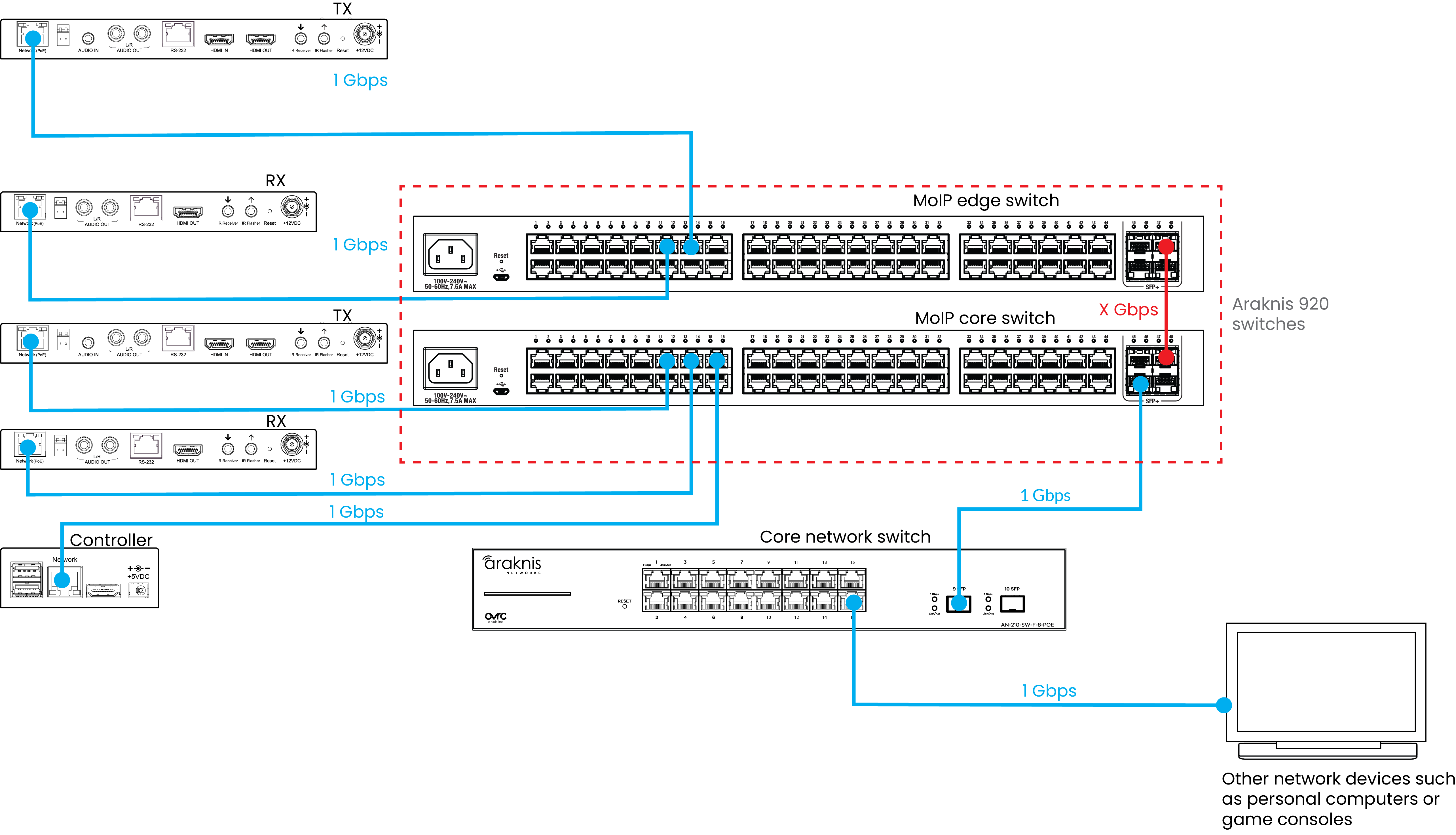Calculating bandwidth
Bandwidth considerations are critically important. The maximum number of MoIP transmitters a network can support is limited to the lowest bandwidth link in the topology. This is usually the link between switches.
To make bandwidth calculations easier, connect as many of the MoIP transmitters to the MoIP core switch as possible. Preferably all of them, to distribute bandwidth evenly. Consider MoIP traffic which may be flowing to additional edge switches.
Note: This applies to all MoIP switches, even if the switch only has MoIP receivers connected because they still subscribe to the streams from transmitters.
MoIP transmitter maximum bandwidth consumption
|
Audio TXs |
50 Mbps per stream |
|
900 series video TXs |
450 Mbps per stream |
|
960 series devices |
9.7 Gbps |
This table shows the maximum bandwidth per MoIP device. The bandwidth may be lower, depending on the content being streamed, but you should make bandwidth calculations based on the maximum usage to avoid disruptions. Read the B-960 MoIP Average Video Bandwidth for a more details about how much bandwidth each video formats consume.
How to calculate MoIP bandwidth
To calculate the required bandwidth of the MoIP system, multiply the number of MoIP transmitters by the bandwidth for each transmitter type.
Keep in mind that the uplink port between switches also handles data for internet, control system traffic, video surveillance cameras, and more.
For example, a system with ten 960 Series MoIP Video transmitters. A B-960 video TX requires 9.7Gbps, and you have ten of them, so your max bandwidth would be 97Gbps. In the below diagram, X Gbps indicates a multi-gig connection between switches. Requires a generic QSFP28 transceiver or direct access cable. This uplink must provide 97Gbps throughput for the MoIP system to operate.
Pro Tip: For B-900 installations, do not exceed 5Gbps on a 10Gbps link. This provides ample margin in the uplink between switches for optimal network performance in most installations.
